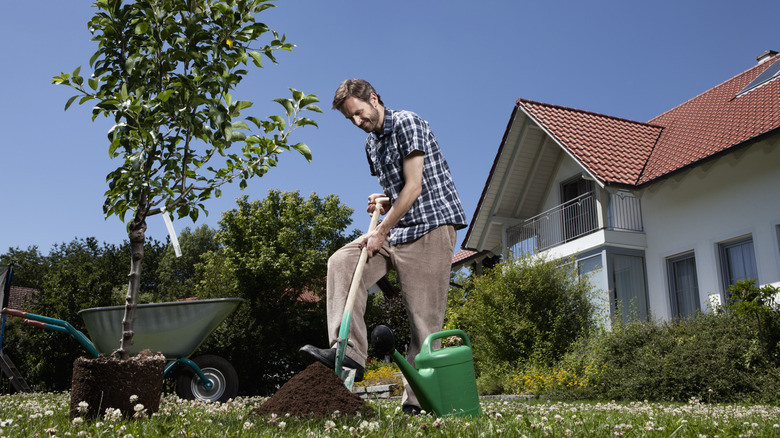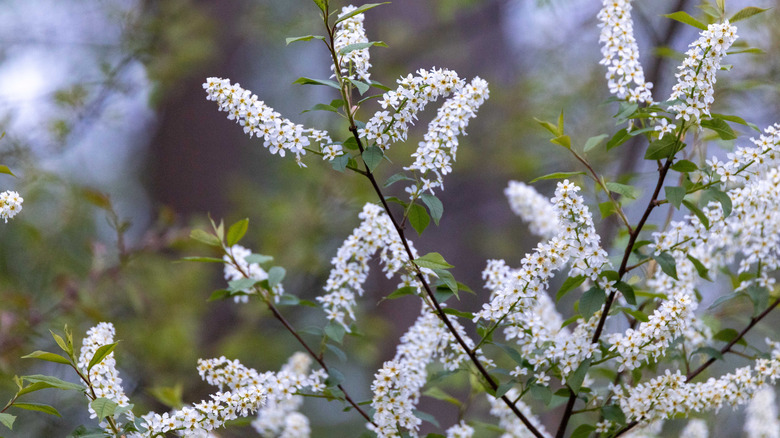The Fast-Growing Tree You Ought To Avoid Planting In Your Yard And Why
What's not to love about fast-growing trees? In just a few short years after planting, they can turn into a gorgeous specimen in your yard and provide your family with shade and beauty. Some even boast flowers. Unfortunately, not all fast-growing trees are good options. The 'Bradford' pear (Pyrus calleryana 'Bradford')is now recognized as an invasive pest that should be avoided in North America despite once being a popular and widely recommended tree — thanks to its beauty and growth speed.
The 'Bradford' pear is a cultivar of the Callery pear, and like all Callery pears, including 'Cleveland' pear trees, it comes with a host of problems. In addition to being invasive and prone to spreading into natural areas where they can outcompete native trees, these ornamental pear trees have other disadvantages as well. While the trees grow quickly, they have a short life span of around 25 years, and their weak branches are prone to breaking. This can make 'Bradford' pears dangerous to grow close to homes. Additionally, they often grow suckers, creating thorny thickets which can be challenging to cut back. And of course, there is the flowers' infamous smell, which has been compared to fish, among other things.
Fortunately, many states have begun banning these problematic trees, and some colleges and forestry departments even run programs to provide free native trees to homeowners who kill 'Bradford' pear trees in their landscape. If you're looking for a fast-growing tree to add to your yard, you can do far better than the 'Bradford' pear. There are a variety of beautiful native trees that lack the issues that plague 'Bradford' pears.
Plant one of these tree alternatives instead
One excellent tree to consider as a 'Bradford' pear alternative is the black cherry (Prunus serotina). This North American native boasts spring blooms and rapid growth, just like a 'Bradford' pear. And unlike 'Bradford' pears, black cherry trees have a life span of around 100 years. Hardy in USDA Hardiness Zones 2 through 8, black cherry trees are also huge hits with pollinators, especially butterflies. You don't have to worry about any unpleasant smells with black cherry trees, as their bark and leaves smell like cherries and almonds. Their pink or white flowers have a pleasant scent as well.
Another fast-growing native tree to consider is the wax myrtle (Myrica cerifera), a type of bayberry. Hardy in zones 7 through 11, this sweet-smelling tree has unique-looking catkins instead of more traditional flowers and is covered in beautiful blue or silver berries during fall. The trees also remain evergreen in many regions. Just be aware that wax myrtle can be quite flammable.
If your favorite feature of the 'Bradford' pear is its stunning (but stinky) blooms, then the Allegheny serviceberry (Amelanchier laevis) may be the tree for you. Native to eastern parts of North America, Allegheny serviceberries are covered in stunningly beautiful, pleasant-smelling blooms in spring. While their moderate growth rate means they may not mature quite as rapidly as a 'Bradford' pear, they more than make up for it with their edible berries. Hardy in zones 4 through 8, Allegheny serviceberries are pollinator magnets and even act as host plants for some butterfly species.

